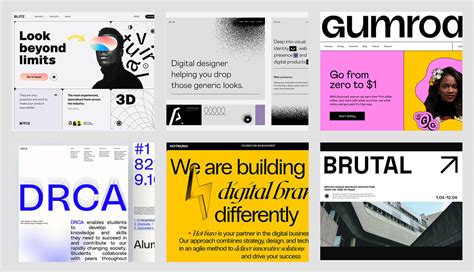In the realm of web design, the resurgence and reinterpretation of brutalism, termed Neo-Brutalism, represents a fusion of historical aesthetic principles with modern digital realities. This stylistic pivot reflects a broader cultural evolution, where design ethos is continually reframed by emerging generational perspectives and technological advancements. The discourse surrounding brutalism in design, particularly among tech-savvy communities like Hacker News, reveals a dynamic interplay between tradition and innovation. Although rooted in the minimalism and functionality of historical brutalism, the transition to Neo-Brutalism embraces vibrant aesthetics and incorporations from cyberpunk and glitch art, challenging purist notions of the style.
The ongoing debate within the tech community about the definition of brutalism in web design underscores a larger conversation about the subjective nature of artistic movements. Critics argue that the essence of brutalism—its raw, unadorned focus on function over form—is often misconstrued or diluted in modern interpretations. However, proponents of Neo-Brutalism argue that the adaptation of brutalism to incorporate modern elements like colorful themes and interactive interfaces does not necessarily detract from its foundational principles. They see it as an evolution of the style, responsive to the user experience demands and technological possibilities of today.
Among the most vocal critics are those who reminisce about the original brutalist designs epitomized by websites like ‘motherfuckingwebsite.com’, which champion minimalist interfaces that eschew any form of aesthetic garnishment. This perspective values the utilitarian roots of brutalism, emphasizing efficiency and straightforwardness. In contrast, modern iterations of brutalist web design often integrate elements that blur the lines between functional minimalism and aesthetic expression, leading to spirited discussions about the authenticity and integrity of the brutalist label in contemporary design.
This dialogue is further enriched by contributions from designers and developers who advocate for a flexible interpretation of brutalism. They argue that design, as a reflection of human culture, must evolve to remain relevant. This includes adapting to new cultural and technological contexts, which can extend the definition of brutalism beyond its original constraints. The application of brutalist principles in varying degrees across different platforms and contexts (such as Progressive Web Apps) illustrates this point, showcasing a pragmatic approach to design that prioritizes functionality while embracing modern web standards.
Critics of this flexible interpretation often express concerns about the dilution of design movements, fearing that such shifts could lead to a loss of historical context and meaning. However, this stance can be seen as a resistance to the natural evolution of art and design, which historically has always been subject to reinterpretation and reinvention. The tension between preserving the purity of brutalism and adapting it to contemporary needs highlights the dynamic and ever-changing nature of design philosophies.
Ultimately, the discussion about brutalism and its modern iterations like Neo-Brutalism reflects broader themes in cultural evolution and the impact of technology on design. It is a testament to the vibrant and contentious nature of artistic expression, where definitions are continually challenged and reshaped. As technology advances and cultural contexts shift, the conversation about what constitutes brutalism in web design is likely to continue, propelled by a community of thinkers who value both tradition and innovation.


Leave a Reply